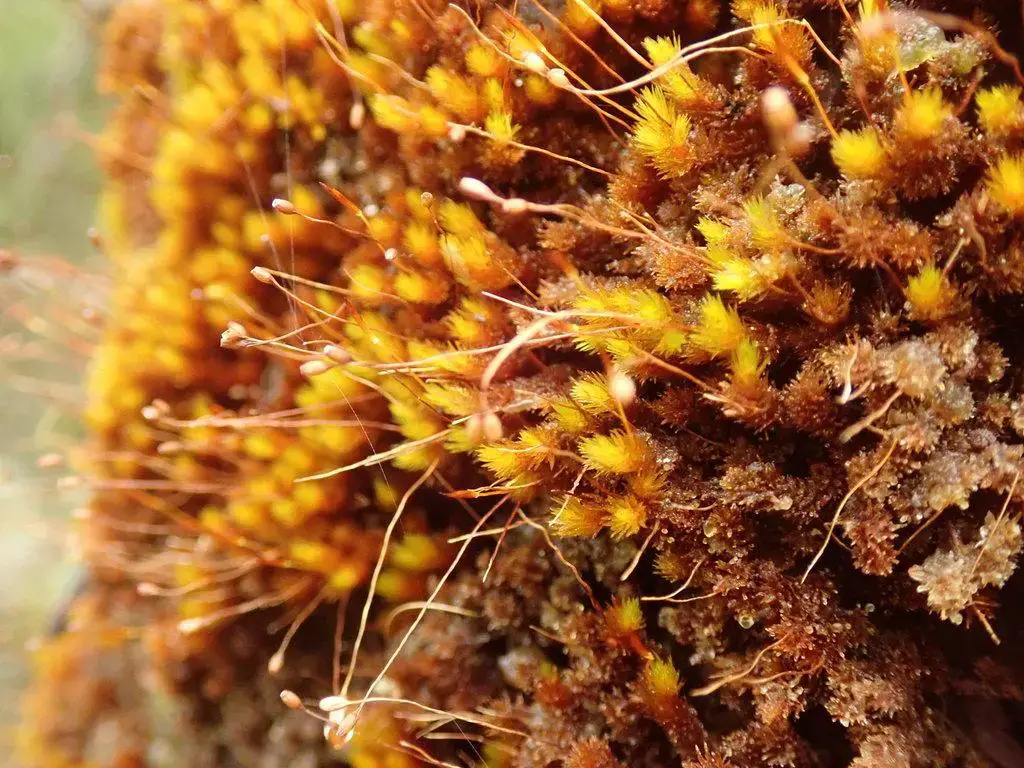
large.jpeg from: https://inaturalist.nz/observations/88236610
Exploring the Fascinating World of Macromitrium stenophyllum Mitt. Moss
Introduction
Mosses are often overlooked, but they play crucial roles in ecosystems around the world. One particularly interesting species is

Macromitrium-prolong01l.jpg from: https://www.digital-museum.hiroshima-u.ac.jp/~museum/habit/moss_habit/Macromitrium prolongatum/Macromitrium_prolongatum.html
Macromitrium stenophyllum Mitt., a moss in the Orthotrichaceae family. Also known simply as Macromitrium, this tiny plant has some remarkable features. In this blog post, we’ll take a closer look at the morphology, distribution, habitat, and ecological importance of this fascinating moss.
Background on Mosses
Mosses are non-vascular plants in the division Bryophyta. Unlike other plants, they lack true roots, stems, and leaves. Instead, they have rhizoids that anchor them and absorb water and nutrients. Mosses are found on every continent and play important roles as pioneer species, in nutrient cycling, erosion control, and providing habitat for other organisms. There are over 12,000 moss species, exhibiting incredible diversity.
Macromitrium stenophyllum Mitt. – Morphology and Identification
Macromitrium stenophyllum is a small, cushion-forming moss. Its scientific name comes from Greek: “macro” meaning large and “mitrion” meaning little cap, referring to the calyptra covering the capsule. The species name “stenophyllum” means narrow-leaved. Key identifying features include:
- Leaves: Narrowly lanceolate, often twisted when dry, with a strong midrib
- Capsules: Cylindrical and ribbed when dry, with a hairy calyptra
- Peristome: Single, with 16 teeth that split into 32 at maturity
- Spores: Spherical, finely papillose, 25-30 μm in diameter
Global Distribution and Habitat
M. stenophyllum has a wide distribution, found in tropical and subtropical regions of the Americas, Africa, and Asia. It typically grows as an epiphyte on tree bark and branches in moist forests from lowlands to 2000 m elevation. It can also colonize rocks and cliffs. This moss prefers partial shade and high humidity.
Ecological Roles and Adaptations
Like other mosses, Macromitrium plays several key ecological roles:
Nutrient cycling: Absorbs nutrients from the atmosphere and releases them as it decomposes, enriching the ecosystem.
Moisture retention: Holds water like a sponge, helping to regulate humidity and slow water loss from its substrate.
Habitat provision: Provides shelter and food for various invertebrates and microorganisms.
M. stenophyllum has several adaptations for its epiphytic lifestyle:
- Twisting leaves that help it conserve moisture
- Rhizoids that firmly attach it to bark
- Spore dispersal by wind to reach new tree habitats
Conclusion
Macromitrium stenophyllum Mitt. is a small but mighty moss with a fascinating biology and ecology. From its humidity-loving leaves to its substrate-gripping rhizoids, this species is well-adapted to thrive in tropical tree canopies. Next time you’re in a tropical forest, take a moment to appreciate the complex world of epiphytic mosses like Macromitrium. Their presence, though subtle, is vital to the health of the entire ecosystem. What other secrets might these ancient plants hold?